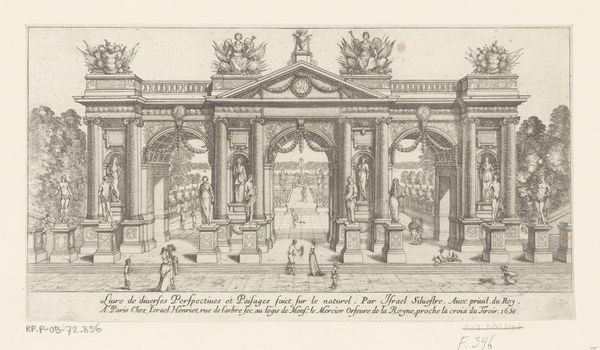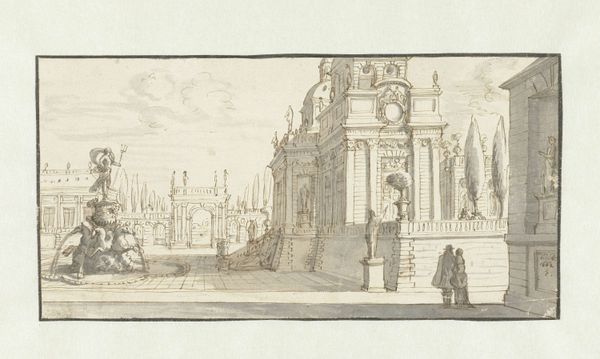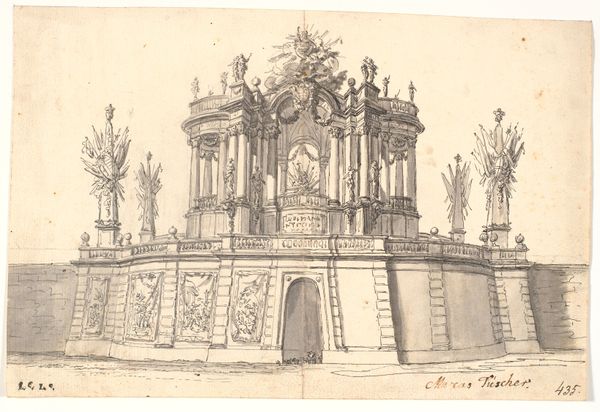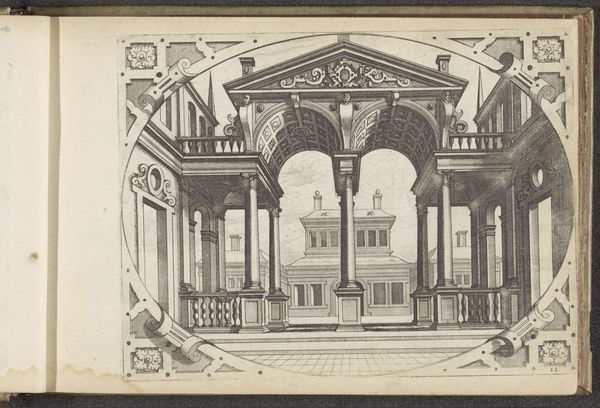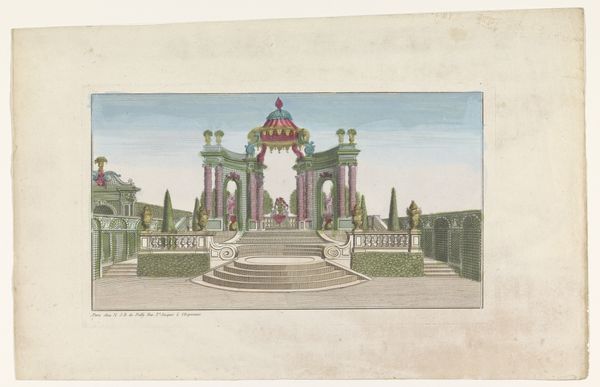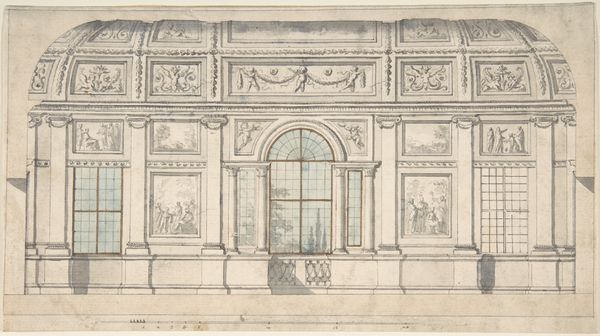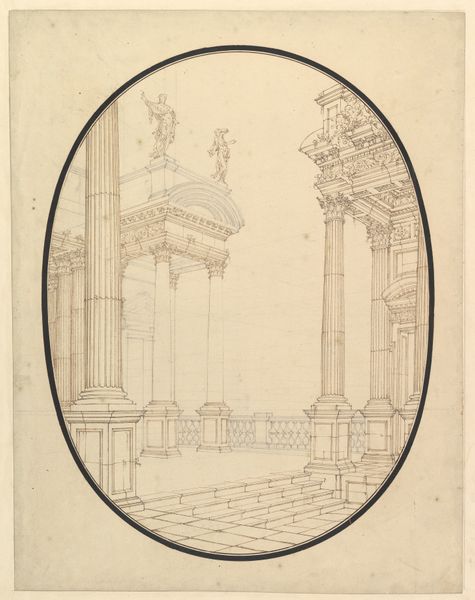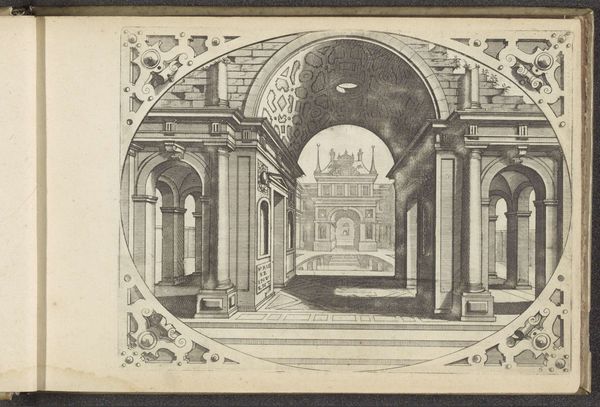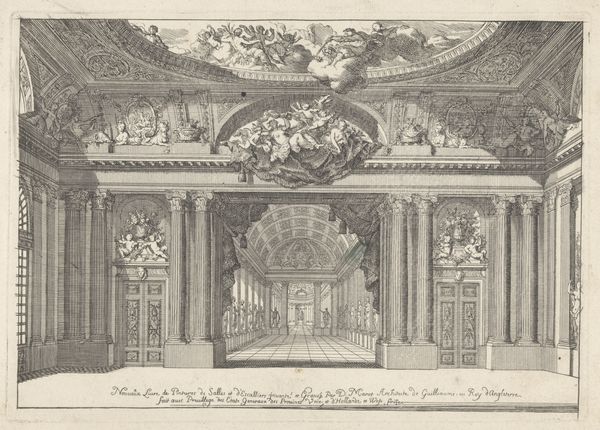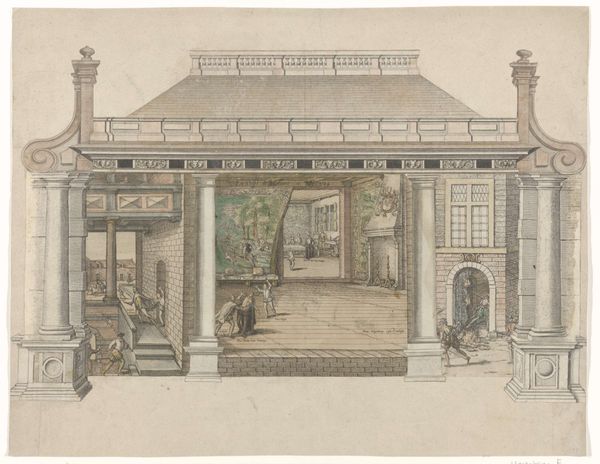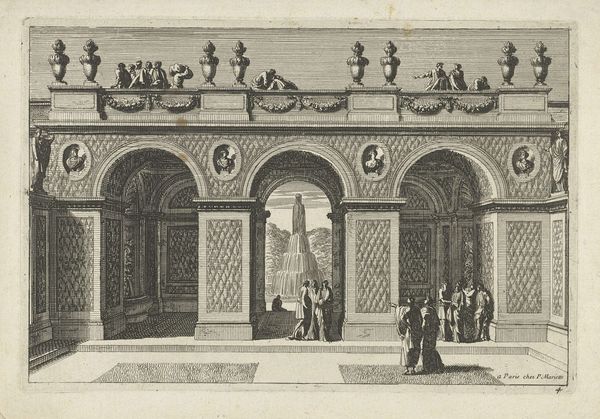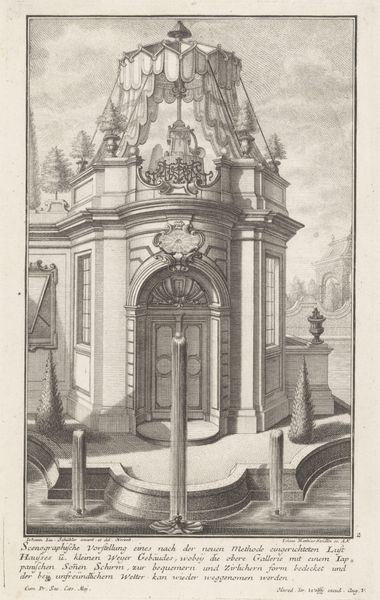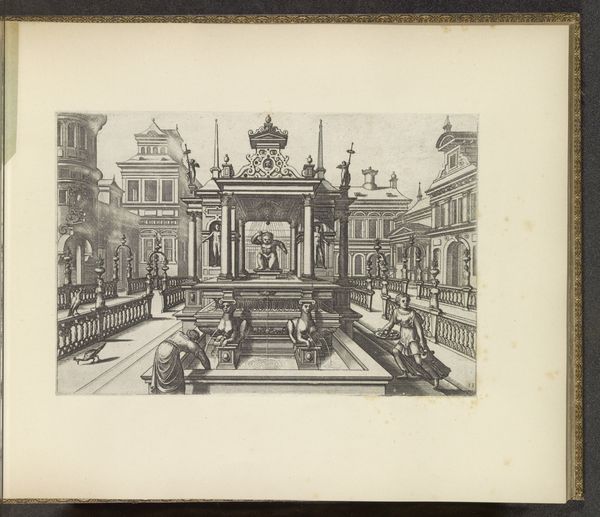
Praalgraf van Willem van Oranje in Delft, ca. 1790 Possibly 1786 - 1825
0:00
0:00
drawing, print, architecture
#
architectural sketch
#
drawing
#
neoclacissism
#
aged paper
#
quirky sketch
# print
#
sketch book
#
personal sketchbook
#
sketchwork
#
architecture drawing
#
sketchbook drawing
#
history-painting
#
storyboard and sketchbook work
#
sketchbook art
#
architecture
Dimensions: height 180 mm, width 260 mm
Copyright: Rijks Museum: Open Domain
Around 1790, Carel Frederik Bendorp created this drawing of the tomb of William of Orange in Delft. At this time, the Netherlands was undergoing significant political upheaval, foreshadowing the Batavian Revolution of 1795. Bendorp’s representation of the tomb is neoclassical in style, reflecting the aesthetic tastes of the late 18th century. But this aesthetic also evokes a sense of civic virtue and order. Note the use of classical motifs such as columns, arches, and allegorical figures, meant to align William of Orange with the ideals of the Roman Republic. It's fascinating to consider how Bendorp's drawing was received at a time when the Netherlands was on the brink of revolution. Was it perceived as a symbol of national pride, or as a reminder of the power structures that the revolutionaries were fighting to overthrow? As you look, reflect on how it embodies the complex interplay between art, identity, and politics during a period of profound social change.
Comments
No comments
Be the first to comment and join the conversation on the ultimate creative platform.
